Years ago, when the TV show What Not To Wear was at the height of it’s popularity, Stacy and Clinton dolled out what really was some of the best fashion advice. One of the lines that stuck with me, always, was that it didn’t have to “match,” it just had to “go.”
I believe that this phrase is a big part of keeping house, as well. One doesn’t need a living room full of matching furniture, or the same light fixtures throughout their home. Even mixed, complementary metals are appearing in kitchens and bathrooms alike (need an example? Check out Room for Tuesday’s new guest bathroom reveal). I realized that I’m starting to apply the same philosophy to the florals throughout our home…
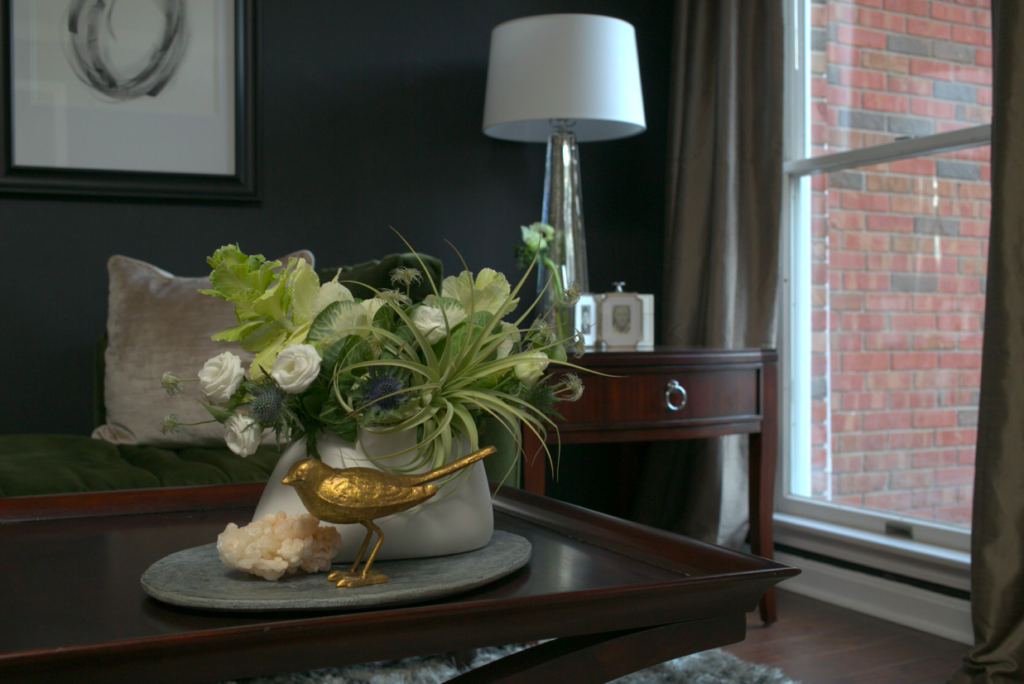
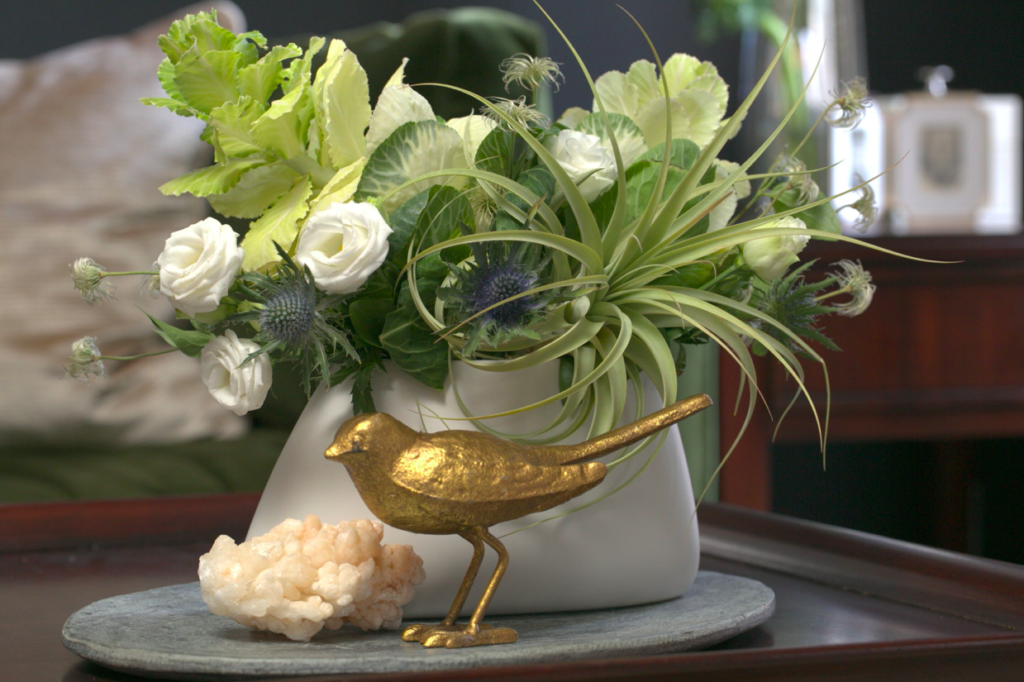
There’s no harm, I’m sure, in having the same orange tulips in every room. However, there’s something so chic and put together when a bloom or two repeats itself in a few different arrangements throughout a small space, or when the same color scheme carries throughout a home (think Charlotte York-Goldenblatt’s all-white florals).
In our living room, spiky blue thistle, an overly dramatic airplant, white lisianthus, fuzzy clematis and ornamental cabbage make for a natural and not-overly-girly arrangement for our coffee table. On one of the end tables, in a slender bud vase, dark-centered anemones don’t match the center arrangement or copy any of the blooms, but next to the white lisianthus and purple thistle, they look as if they belong in the same room without being matchy-matchy.
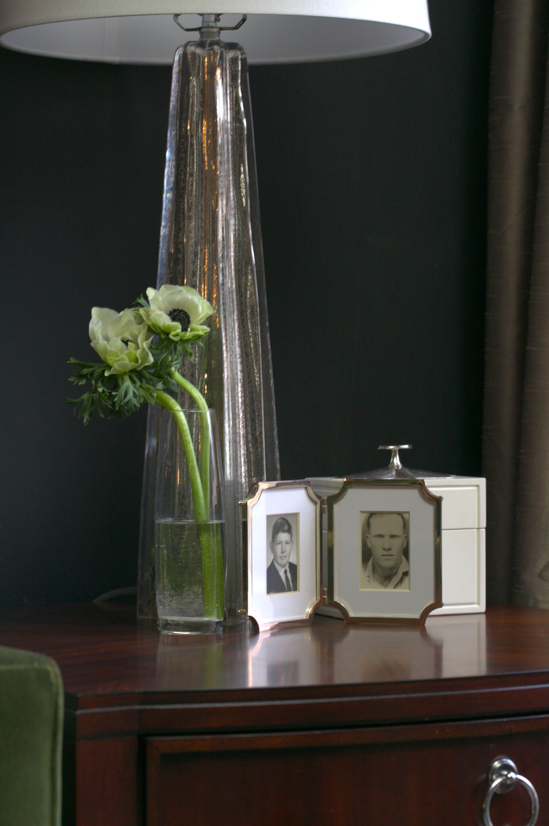
A few rooms away, yet on the same floor, in the kitchen, a small handful of the clematis make a reappearance next to the cookbooks.
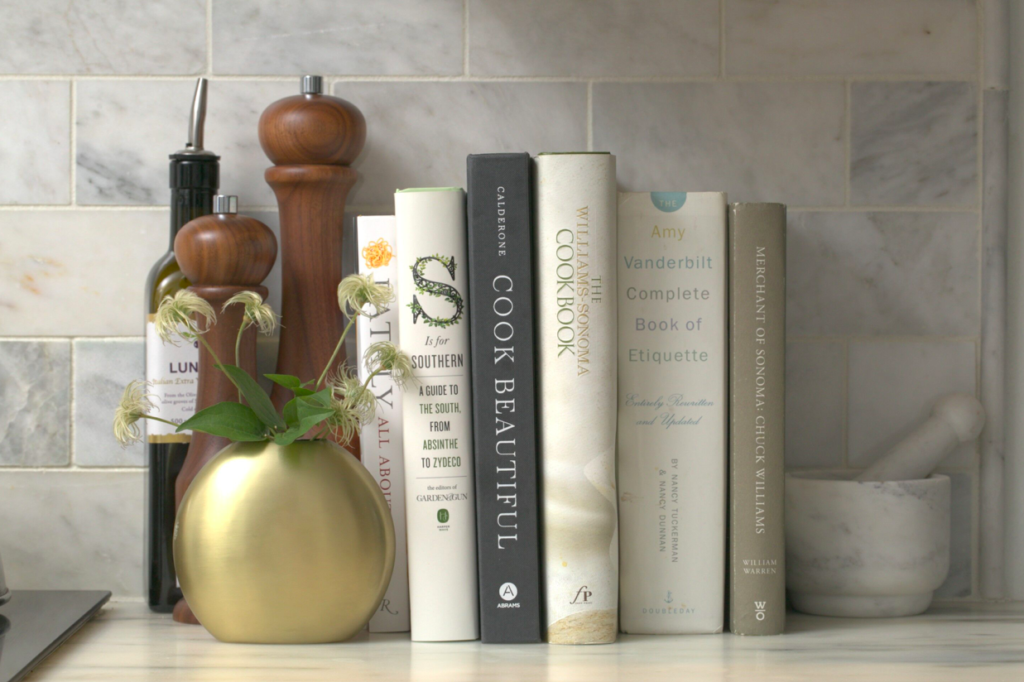
Something simple like the clematis almost take on the same adaptability as a greenery would, reminding me of what’s happily sitting on our living room table without repeating it entirely. All three arrangements look as if they belong together, organically and unintentionally.
Want to create a few happy arrangements that “go” together? Begin with a color palette. Gather stems in your hands being sure to include different textures like the clematis and the thistle, and something unexpected (in this case, the airplant… but think about large protea, birds of paradise, orchids) making sure that there aren’t too many spiky options or too few options altogether. For the stand alone smaller arrangements, I like to use a single bloom from the main arrangement, and a single bloom that isn’t but looks like it could belong just as easily.
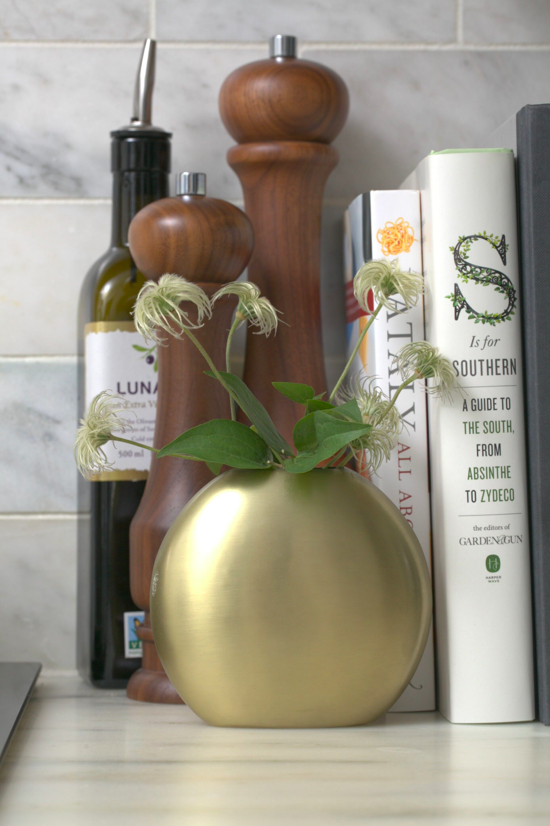
** this post is in partnership with Mahonia. all thoughts and opinions are my own **
** photos by Don Lehman **
